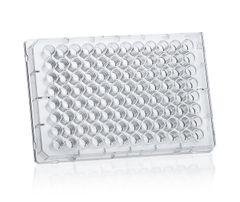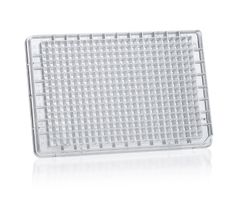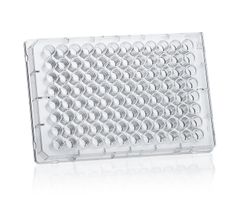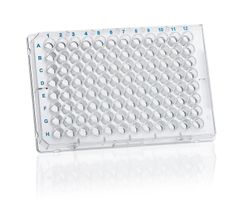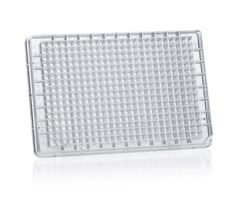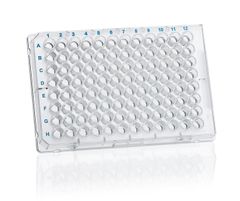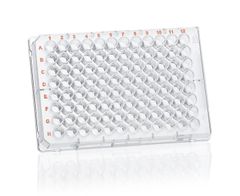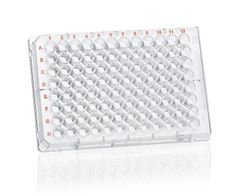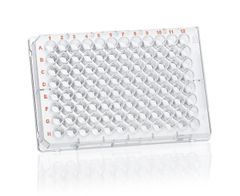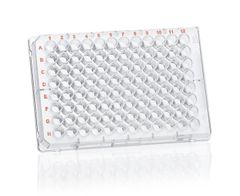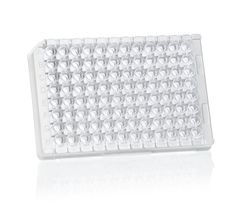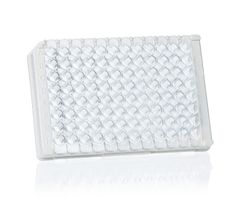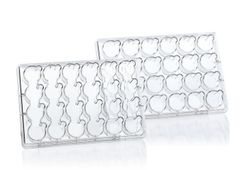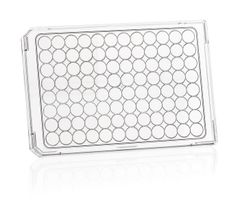What is a V-bottom?
96-well BRANDplates® are offered with four distinct well bottom shapes. V-bottoms are conically-shaped well bottoms. Sample recovery is optimized with this bottom shape.
For this reason plates with V-bottom are especially used for precipitation assays and storage.
What is a F-bottom?
96-well BRANDplates® are offered with four distinct well bottom shapes. A F-bottom is a flat well bottom. It is designed for precise optical measurements and is recommended for colorimetric determinations as well as microscopy applications. Additionally, the F-bottom is used for specific applications such as cell culture.
All 384-well and 1536-well microplates are only available with F-bottom.
What is a U-bottom?
96-well BRANDplates® are offered with four distinct well bottom shapes. A U-bottom is a round-shaped well bottom. This bottom has no edges and is recommended for stirring and washing of samples. This bottom form is used for agglutination and other assays requiring these tasks.
What is a C-bottom?
96-well BRANDplates® are offered with four distinct well bottom shapes. A C-bottom is a flat bottom with curved edges. The C-bottom combines the advantages of U- and F-bottom. Because of the curved edges better sample mixing is obtained. The flat bottom in the middle of the wells at the same time allows the realization of precise optical measurements.
The C-bottom is widely used for immunological assays, as sample stirring has a major impact on precise assay results.
How can I find the right plate for my application?
With the new online BRANDplates® SelectionGuide you can find for each application the right plate quickly and effectively!
What is the meaning of the red dot on the package of sterile products?
The dot is an indicator for sterilization. The indicator changes its color from yellow/orange to red during the sterilization process. A red dot indicates that this package has been sterilized.
Is there a reason for colored embossed numbers on 96-well plates?
To enable an easy identification of the surface type and to facilitate the legibility of the alphanumeric coding, most BRANDplates® microplates in the 96-well format have a color coded embossing.
Non treated standard microplates are grey coded.
Standard microplates for immunological applications have a blue color-coded embossing.
Standard microplates for cell culture applications are orange coded.
What is the "SLAS-Standard"?
The Society for Laboratory Automation and Screening (SLAS) has set the standards for the most important dimensions with tolerances for 96-well, 384-well and 1536-well plates.
BRANDplates® microplates are manufactured according to the ANSI-SLAS-Standard 1 through 4 - 2004, to ensure compatibility for all processes, especially when automation is involved.
What does SAL mean?
The Sterility Assurance Level (SAL) describes the probability of a product being non-sterile after it went through the sterilization process. BRAND designs the sterilization processes of its products for an extremely low SAL of 10-6 . "One in a million" devices could be non-sterile after the sterilization process.

